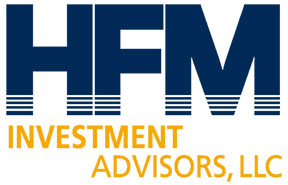
The Marathon of Wealth: Investing Lessons from Distance Running
Many people avoid running, which is understandable. You need to take time out of your busy schedule, only to exhaust your body. Perhaps fittingly, the same thing is true with your finances and investing. When people think about trying to get serious with their wealth, they often get intimidated, scared, and frustrated. Fortunately, there are plenty of parallels between distance running and investing. Not everyone in the world wants to become a “runner,” but the truths that tie the two disparate topics together apply to every single person who seeks financial independence.
Investing, especially in the context of retirement, is a marathon, not a sprint. Investing involves consistently setting aside a significant amount of money and sticking with a process through thick and thin, good times and bad, when it feels like you are making money every day and when it feels like you shouldn’t be investing at all. The realization of financial accomplishments in the future is only achieved with regimented financial discipline in the present, which bears an uncanny parallel to the rigors of sticking with a running training plan. When you switch from the couch to a 5k program, you need to do something every day (even if it is just a walk and stretching) with the goal of completing a 5k race at the end of the schedule. There will be days when you run a few miles, then remember you could not do that a month prior. On the other hand, there will be days when you are sore, it is raining outside, the cold wind chills you to your core, and the last thing you feel like doing is lacing up and hitting the street. That doesn’t matter because you must stick with the process to achieve your goals. Keeping a structured system is the primary way to realize fitness and financial gains.
Following a deliberate plan is the best way to solidify your finances, but there are ways to optimize it. Having an asset allocation that reflects your unique circumstances is critical. In plain English, that means having the correct proportion of more volatile stocks and less volatile bonds for your age and tolerance for risk. A younger person can generally handle more volatility (rise and fall in value) in their portfolio than an older person because the younger person has more time to make up for a potential loss in value. No portfolio or asset allocation is one-size-fits-all. The same is true with the shoes on the feet of runners. You pick the right running shoes based on the features, comfort, and how those shoes can help you run that 5k. Sure, you could race in marathon shoes, but it would not optimize your results. Likewise, the young hair stylist straight out of tech school would likely not achieve optimal results with the allocation of her neighbor, who is an 82-year-old widow. Your asset allocation in investing and your shoe selection in running both help to enhance your performance.
Having the proper “shoes” for your future can keep your investments from being misaligned with your risk profile, but that is far from the only way to lose money in the markets. The IRS will want to get its piece of your pie, which is why asset location (the type of accounts in which your assets are contained) is at least as important as asset allocation. Perhaps one of the most basic examples of this is the usage of a Roth IRA vs a Traditional IRA. The chart below explains some of the differences between the two accounts.
| Traditional | Roth | |
| Contributions | Tax deductible if IRS qualifications are met | Not tax-deductible |
| Withdrawals | Withdrawals are taxed as ordinary income. Subject to an additional 10% penalty if taken before the age of 59 ½ | Withdrawals are not taxed because tax was paid on the front end. Subject to an additional 10% penalty if taken before the age of 59 ½ |
Both Traditional and Roth savings vehicles have their place. Roth accounts can sometimes help you to amass more in the long term. As a broad example, if you are 25 and put money into a Roth IRA to withdraw at 65, the difference between a Roth IRA and a Traditional IRA (contributions made after-tax and pre-tax, respectively) is about 12% on just one contribution1. On the other hand, sometimes higher earners need that current year tax deduction, and they may choose to contribute to a Traditional IRA. There are far more advanced and confusing examples of the upside of asset location, but the Roth vs Traditional comparison can often be easy to understand. This truth could be linked to the attire that runners wear – the expensive shoes mentioned earlier, bright colors, compression pants, and socks, and when it’s cold, jackets and vests to keep the runner warm. What is this unique wardrobe designed to do? Outside of possibly making the runner feel cool-looking, it is designed to optimize results. Just as the sprinter could run in plush marathon shoes, the distance runner could go run in a sweatshirt and jeans, but it would not be ideal, it would not aid the runner in the long term. The runners that dress with such sleekness and precision are living metaphors for how your portfolio should be designed not just with the right securities but in the right places.
If you have the proper shoes on, the correct number of layers, and follow a solid process, you will set yourself up well as a long-term investor. But an air-tight investment strategy is only a fraction of your total financial picture. Ask any experienced runner, and they will tell you that running is far from their only exercise. They stretch, get massages, work on their core, and perform many other fitness maximization exercises. These extra workouts and marginal improvements can be the difference between health and a podium finish or injury and failure to advance to the final. The same is true with the all-encompassing approach to financial planning. Your investments tie into insurance and taxes, which can then affect your estate planning. When an advisor discusses estate planning, tax avoidance, insurance planning, business succession planning, and a laundry list of other topics, they are doing so to make sure that your (hopefully proper) investment strategy does not suffer a career-ending injury due to a problem in a different part of your financial picture. In both the running and financial realms, consideration should be given to the whole situation, not just the main action.
Although your relationship with running may not change after reading this article, your views on long-term investing have hopefully become more positive. Just like a runner, you need to set goals and stick to your plan. In the marathon of your financial life, your career is your training, and your retirement is your race. And like any athlete, a coach can help improve your performance because coaches do more than offer advice. They give encouragement and provide accountability. At HFM Investment Advisors, our goal is to be that voice of encouragement and that source of advice as you train your financial life. We have several different services that are tailored to your life and goals through convenient financial coaching. No matter where you are in life, we have a service that can help you. Click here to learn how HFM can help you!

102 WEST HIGH STREET, SUITE 200
GLASSBORO, NJ 08028
WARRANTIES & DISCLAIMERS
HFM Investment Advisors, LLC (HFM) is a registered investment adviser located in Glassboro, NJ. HFM’s website is limited to the dissemination of general information pertaining to its advisory services, together with access to additional investment-related information, publications, and links. Accordingly, the publication of HFM’s website on the Internet should not be construed by any consumer and/or prospective client as HFM’s solicitation to effect, or attempt to effect transactions in securities, or the rendering of personalized investment advice, over the Internet. A copy of HFM’s current written disclosure statement discussing HFM’s business operations, services, and fees is available at the SEC’s investment adviser public disclosure website – www.adviserinfo.sec.gov or from HFM upon written request. HFM does not make any express or implied representations or warranties as to the accuracy, timeliness, suitability, completeness, or relevance of any information prepared by HFM or any unaffiliated third party, whether linked to HFM’s website or incorporated herein, and takes no responsibility therefor. All such information is provided solely for convenience purposes only and all users thereof should be guided accordingly.
This website and information are provided for educational and information purposes only. All investments involve risk and are not guaranteed. Be sure to first consult with a qualified financial advisor and/or tax professional before implementing any strategy. This website and information are not intended to provide investment, tax, legal, or other professional advice.
